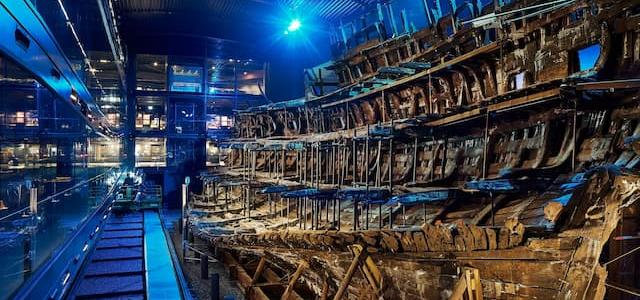
Antarctic Nimrods: warriors of snow and ice
The sledge and sledging flag from Ernest Shackleton’s British Antarctic Expedition are the latest items to be saved for the nation by the National Heritage Memorial Fund. Charlotte Connelly, Polar Museum Curator at the Scott Polar Research Institute, University of Cambridge and Jeremy Michell, Senior Curator of Maritime Technologies, National Maritime Museum, Greenwich talk to us about the importance of these objects and share some fascinating insights into the historic expedition.
On 4 January 1909, Ernest Shackleton, Eric Marshall, Jameson Adams and Frank Wild stood 97.5 miles from the South Pole, closer than any other person had ever managed. Despite the impressive achievement, it fell short of their goal of reaching the Pole. Shackleton, the party’s leader, wrote: "We have shot our bolt.” The party turned north in a race against time to retrace their steps and reach the safety of the expedition hut before the rations ran out and their ship, Nimrod, departed for New Zealand.
Heroic Age of Exploration
Today the Nimrod Expedition, or more properly the British Antarctic Expedition 1907-1909, is relatively little known. It is overshadowed by the achievements of Norwegian explorer Roald Amundsen, who reached the South Pole in December 1911, and the death of Scott and his companions on their return from the Pole a few weeks later. Despite this, Nimrod was a significant expedition during the Heroic Age of Exploration. It witnessed the first men to reach the magnetic South Pole, which was more accessible than the geographic South Pole.
The expedition also undertook important geological surveys and expedition members made the first ascent to the crater of Mount Erebus, the world’s most southerly active volcano.
Saving the sledge
Despite the pioneering nature of the expedition, little material culture survives in British museums. When an 11ft sledge and silk sledging flag owned by Dr Eric Marshall were offered for sale, there was an opportunity to redress that shortcoming. The Government put a temporary expert deferral in place under a scheme designed to prevent important cultural items from leaving the UK, allowing the Scott Polar Research Institute (SPRI) and the National Maritime Museum (NMM) to work together to raise funds to save the two objects for the nation.
The 11ft sledge was one of a number taken by Shackleton to the Antarctic. As the only Nimrod sledge with a direct association to one of the men from the South Pole party, the sledge takes on a particular importance. It offers unique research opportunities into the expedition, personnel and technology, and will allow the NMM to link this sledge directly with its collections from the British Arctic expeditions of the 19th century.
Watch a short film about transport technology in Antarctica, including a Terra Nova Nansen style sledge.
Banners and bravery
Sledge flags traditionally started during the mid-19th century. Their individual designs are personal to the owner, harking back to Victorian interests in chivalry and heraldry. Marshall’s silk sledge flag has two blue bands top and bottom and a central cream band embroidered with a red unicorn head and gold anchor. It will be in excellent company at the Scott Polar Research Institute, being cared for alongside the sledging flag that Ernest Shackleton took on the expedition.
After the expedition, Eric Marshall saw active duty in the First World War, being mentioned in dispatches twice and then awarded the Military Cross in January 1918. Marshall’s relationship with Shackleton was fractious, especially during the difficult and dangerous attempt on the South Pole, and he never returned to the Antarctic. After the war he was posted to Archangel in Northern Russia as a member of the British North Russian Expeditionary Force, serving as a senior medical officer. For his services there he was appointed Commander of the Order of the British Empire and awarded the Russian Order of St Stanislaus.
The support of the National Heritage Memorial Fund was vital in enabling the NMM and SPRI to acquire these two objects. It is a timely acquisition, as 2020 is the 200th anniversary since the first sighting of the Antarctic continent, and the 100th anniversary of the founding of SPRI. The funding also coincides with the NHMF’s 40th anniversary and is an opportunity to celebrate their work as a funder of last resort and a continued supporter of saving significant polar objects.

